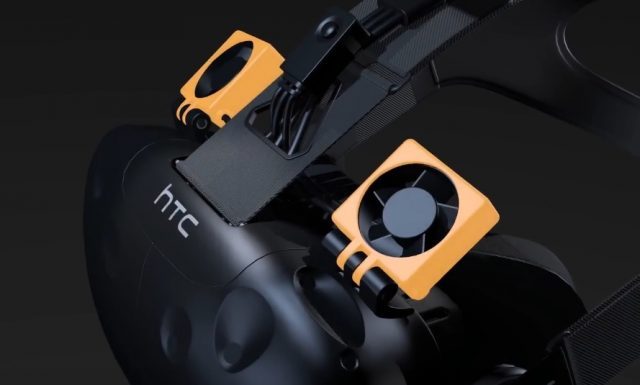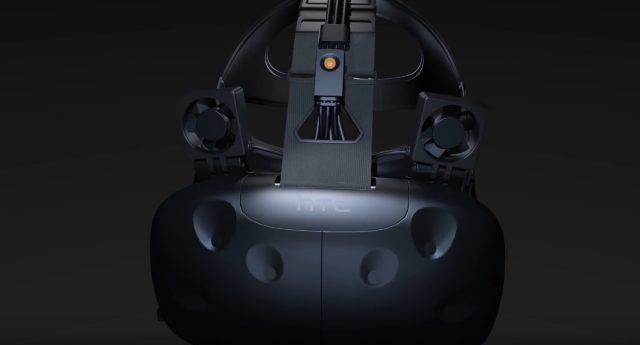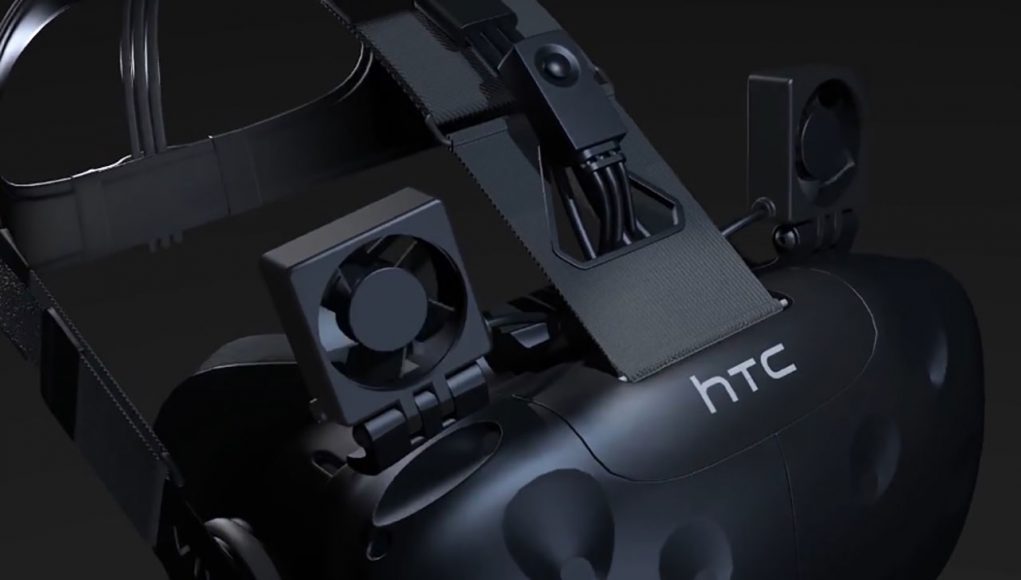ViveNchill is a new bolt-on cooling system comprising two angled fans that the creators claim will banish foggy, sweaty headset issues for good.
Unsavoury headline aside, the folks at RedRotor (a company previously specialising in drone components and accessories) have turned their hand to a problem which in truth still doesn’t have a universal solution – sweaty VR face syndrome.
Their prototype product, which the company plans to bring to Kickstarter soon, is called ViveNchill and is a neat, if surprising solution which the company claim is born from extensive testing and the need to meet a strict set of criteria. The brief was to come up with a cheap, quiet and lightweight headset mounted system which was easy to operate and yet delivered effective cooling, dealing with heat buildup inside the HTC Vive while under heavy use or just a quick bout of summer VR.
The surprise? ViveNchill doesn’t opt for the most obvious approach of piping (or extracting) air from the headset itself, it instead uses dual tilting fans mounted atop the face interface, angling down towards the user’s forehead. The fans are powered from the Vive’s top-mounted USB port (which sits in the recessed area underneath the breakaway top section, near the other ports). It also includes a neat, accessible on/off switch mounted over the top head strap.
“We experimented with countless fan types and build iteration after iteration of prototypes that focus on piping air into the headset,” says Tony Tran, co-designer of ViveNchill, “It didn’t take long to realise that most user experience problems with dry eyes, high noise levels and low air flow. In the end, we discovered that dissipating the heat generated across the forehead provided a much more substantial benefit than forcing air into the headset itself.”
 An interesting solution indeed and one, if I’m honest, I’m a tad sceptical of without having the benefit of trying it out. Cooling is only delivered to the top of the head, which sounds ineffective on the face of it (sorry). That said, assisting with heat dissipation across areas of blood flow around the area does make some sense to me, and if it does work, this could be a real game changer for those living in warmer climates or those VR user who like to exert themselves while immersed. We’ve been offered a review unit, so will try to see for ourselves if this is effective and let you know.
An interesting solution indeed and one, if I’m honest, I’m a tad sceptical of without having the benefit of trying it out. Cooling is only delivered to the top of the head, which sounds ineffective on the face of it (sorry). That said, assisting with heat dissipation across areas of blood flow around the area does make some sense to me, and if it does work, this could be a real game changer for those living in warmer climates or those VR user who like to exert themselves while immersed. We’ve been offered a review unit, so will try to see for ourselves if this is effective and let you know.
 RedRotor are aiming for a low retail price of $25-32 for ViveNchill, with the fans specced to run at less than 23db, a level you won’t ever notice once immersed. At that price point, it may be worth a punt regardless. To that end, we’ll let you know when the Kickstarter goes live.
RedRotor are aiming for a low retail price of $25-32 for ViveNchill, with the fans specced to run at less than 23db, a level you won’t ever notice once immersed. At that price point, it may be worth a punt regardless. To that end, we’ll let you know when the Kickstarter goes live.







